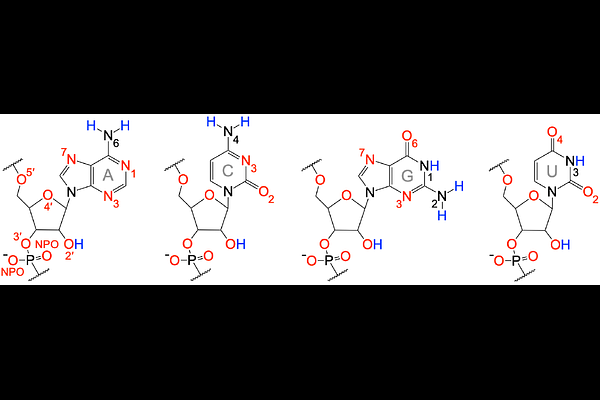Prevalence of dual-donating amines in key regions of functional RNAs

Prevalence of dual-donating amines in key regions of functional RNAs
Veenis, A. J.; Saon, M. S.; Bevilacqua, P. C.
AbstractRNA performs many critical functions nearly all of which are enabled by complex hydrogen bonded structures. Nucleotides possess far fewer hydrogen bond donors than acceptors, and only the exocyclic amine can donate two H-bonds, suggesting a specialized role. To assess the prevalence and structural contexts of dual-donating amines within structured RNAs, we created a computational workflow that mines and analyzes experimental RNA-containing structures. We evaluated H-bonding in over 250,000 amines from more than 1,800 structures. Dual-donating amines were found most frequently in G\'s where they regularly interacted with diverse pairs of acceptors. In contrast, the dual-donating amines of A\'s and C\'s were less frequent and they interacted with a more select set of acceptors. For all three nucleobases, amines that were dual-donating had both reduced solvent accessibility and higher atom density relative to amines that were non-donating, indicating a tendency of dual donors to be more buried and help compact the RNA. Moreover, analysis of RNA pseudo-torsion angles revealed that dual-donating amines are enriched in two non A-form conformations, both of which are present in S-motifs found in the sarcin-ricin loop of rRNA. We find that dual-donating amines populate additional structural motifs including the GNRA tetraloop receptor, the kink-turn, and the WC/H A-minor motif, which are present in the self-splicing group I intron, the SAM riboswitch, and the poly(A)-bound ENE. We suggest that dual-donating amines may enhance interactions by reducing conformational entropy loss as well as strengthening nearby H-bonds.